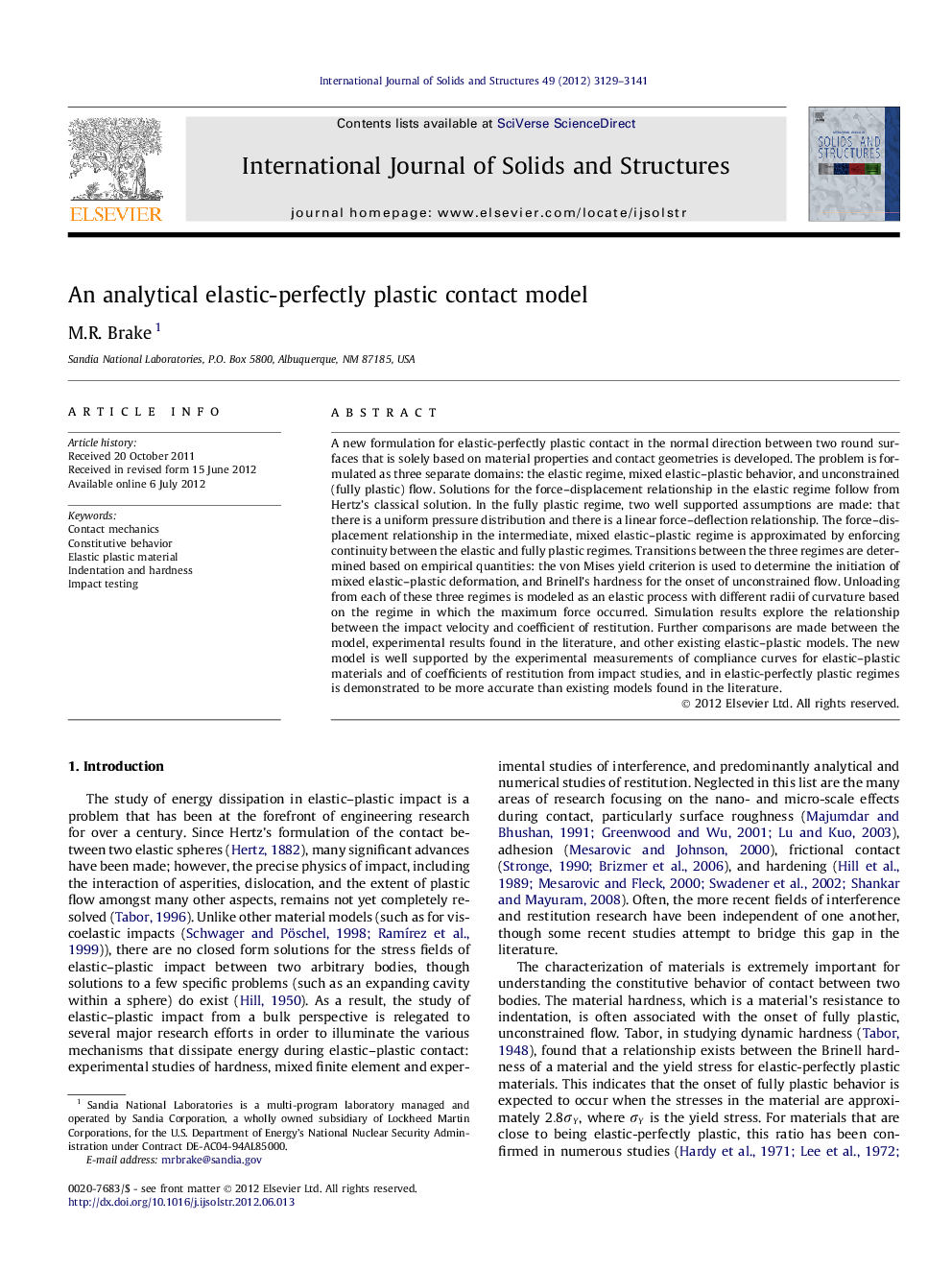| Article ID | Journal | Published Year | Pages | File Type |
|---|---|---|---|---|
| 278306 | International Journal of Solids and Structures | 2012 | 13 Pages |
A new formulation for elastic-perfectly plastic contact in the normal direction between two round surfaces that is solely based on material properties and contact geometries is developed. The problem is formulated as three separate domains: the elastic regime, mixed elastic–plastic behavior, and unconstrained (fully plastic) flow. Solutions for the force–displacement relationship in the elastic regime follow from Hertz’s classical solution. In the fully plastic regime, two well supported assumptions are made: that there is a uniform pressure distribution and there is a linear force–deflection relationship. The force–displacement relationship in the intermediate, mixed elastic–plastic regime is approximated by enforcing continuity between the elastic and fully plastic regimes. Transitions between the three regimes are determined based on empirical quantities: the von Mises yield criterion is used to determine the initiation of mixed elastic–plastic deformation, and Brinell’s hardness for the onset of unconstrained flow. Unloading from each of these three regimes is modeled as an elastic process with different radii of curvature based on the regime in which the maximum force occurred. Simulation results explore the relationship between the impact velocity and coefficient of restitution. Further comparisons are made between the model, experimental results found in the literature, and other existing elastic–plastic models. The new model is well supported by the experimental measurements of compliance curves for elastic–plastic materials and of coefficients of restitution from impact studies, and in elastic-perfectly plastic regimes is demonstrated to be more accurate than existing models found in the literature.
